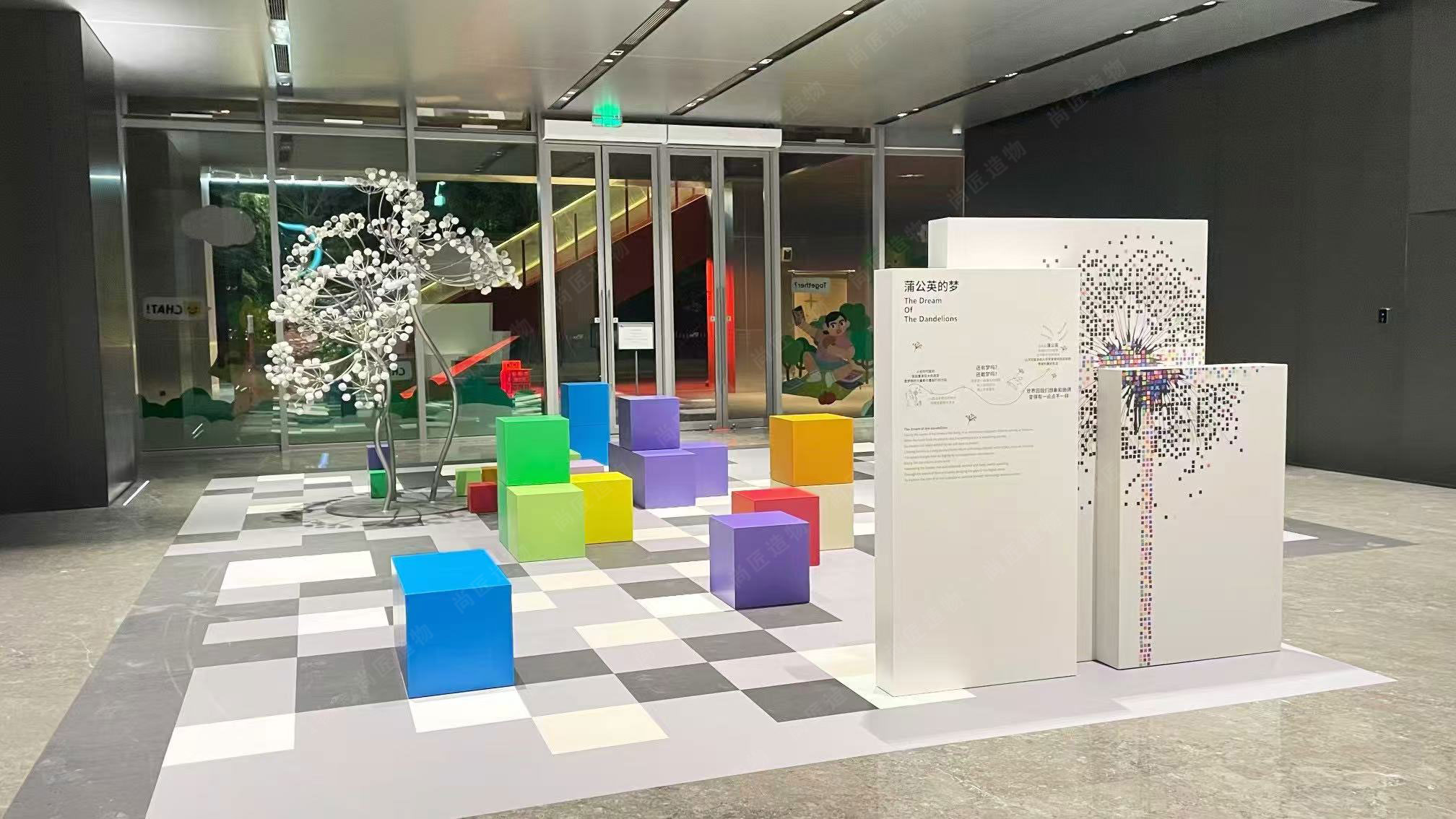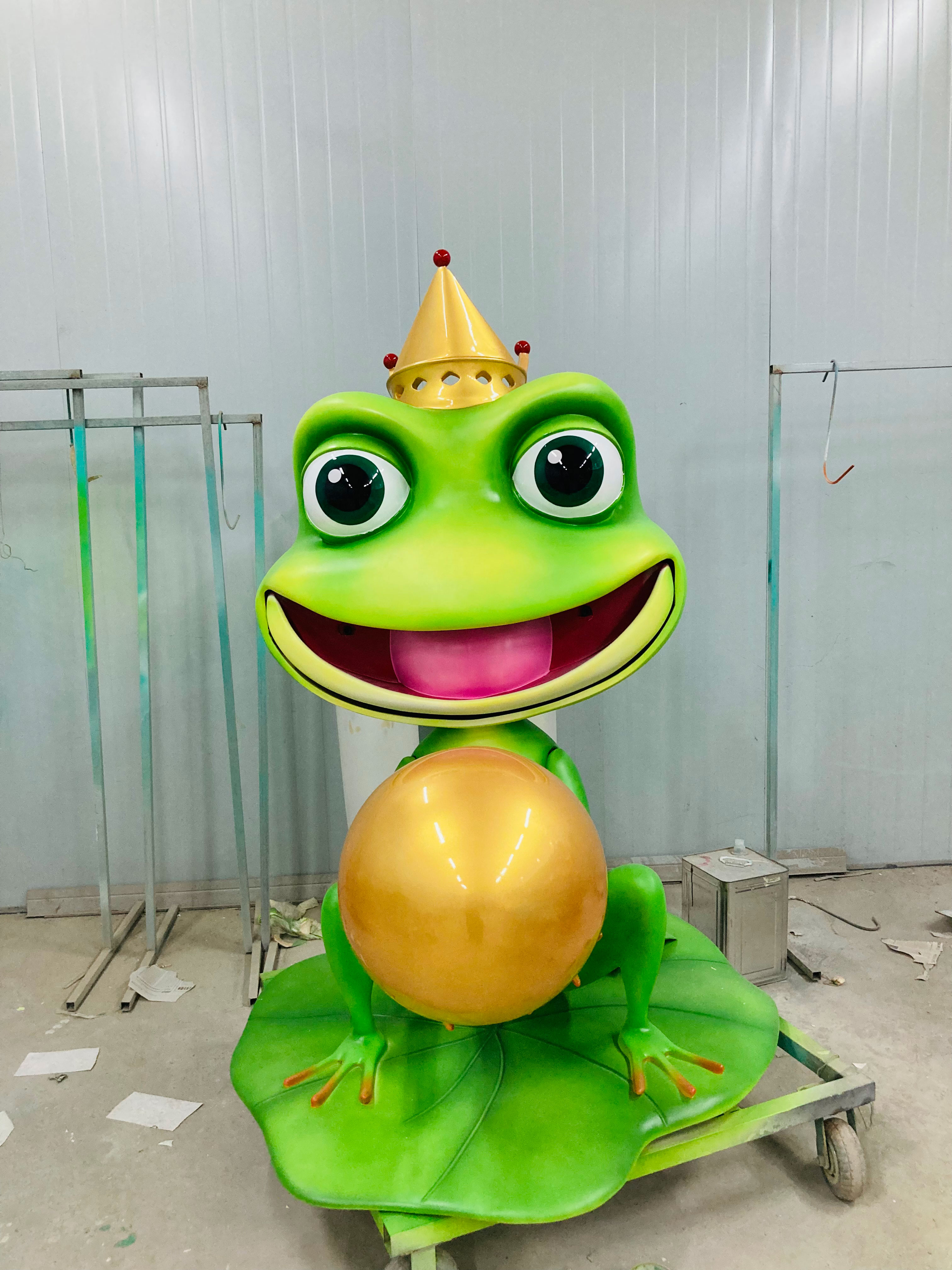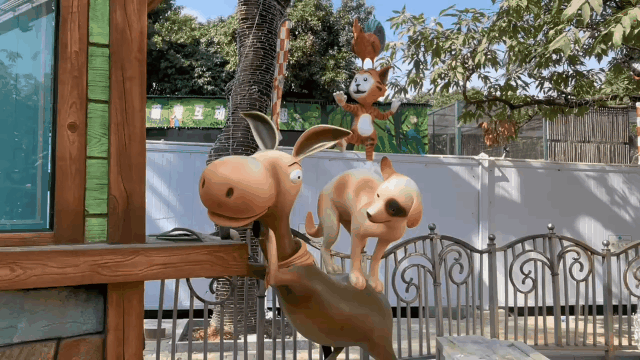Key Takeaways
Interactive kinetic sculptures represent a fusion of artistic vision and engineering precision, creating immersive experiences that redefine public spaces. These installations leverage motion sensors, responsive materials, and programmable systems to engage viewers, turning passive observers into active participants.
"Kinetic art bridges the gap between static form and living environment, inviting people to co-create moments of wonder." – Dr. Elena Torres, Urban Design Researcher
| Three critical elements define successful installations: | Element | Purpose | Example |
|---|---|---|---|
| Motion Mechanisms | Enable dynamic transformations | Motorized arms, wind-driven components | |
| Interactive Technology | Facilitate audience interaction | Touch-sensitive surfaces, AR interfaces | |
| Sustainable Materials | Ensure longevity and low impact | Recycled metals, solar panels |
For municipalities considering such projects, prioritize collaborations between artists, engineers, and community stakeholders. A 2023 study by the Urban Art Institute found that installations with localized cultural references saw 40% higher public engagement.
Transitioning from traditional monuments, these sculptures introduce variable narratives—their forms shift with weather, time, or human input, ensuring no two encounters are identical. This adaptability makes them particularly effective in revitalizing underutilized plazas or transit hubs, where motion mirrors urban rhythms.
Tip: Integrate maintenance protocols during design phases—kinetic components require specialized upkeep to ensure decades of operation.

Art Meets Tech in Public Sculptures
At the intersection of artistic expression and technological innovation, interactive kinetic sculptures are redefining urban landscapes. These installations often incorporate motion sensors, programmable lighting, and responsive materials like fiberglass sculpture, which offer durability while enabling intricate forms. Embedded microcontrollers or solar-powered mechanisms allow sculptures to react to environmental stimuli—such as wind, touch, or crowd movement—creating a dialogue between the artwork and its surroundings. For instance, rotating panels might shift with pedestrian activity, while LED arrays pulse in sync with ambient sound levels. This fusion of engineering and aesthetics not only enhances visual appeal but also invites spontaneous interaction, transforming static plazas into living galleries. By integrating renewable energy systems or recycled materials, designers further align these works with sustainable urban development goals. As cities increasingly prioritize experiential spaces, such sculptures demonstrate how technology can amplify art’s capacity to reflect and adapt to the rhythms of public life.
Kinetic Art: Community Engagement Tools
Kinetic sculptures transcend traditional Realistic sculpture by integrating movement and interactivity, fostering deeper connections between art and communities. These installations often employ motion-sensitive technology—such as sensors, wind-activated mechanisms, or touch-responsive interfaces—to transform passive viewers into active collaborators. For example, a rotating sculpture might shift patterns based on crowd density, while light-based works could synchronize with participants’ gestures. By embedding responsiveness into their design, artists create shared experiences that mirror collective input, turning public squares or parks into stages for spontaneous interaction.
Municipalities increasingly adopt kinetic art to stimulate social cohesion, particularly in areas lacking cultural infrastructure. A 2022 study by the Urban Arts Initiative found that interactive kinetic installations increased foot traffic by 38% in underutilized plazas, with 72% of visitors reporting heightened feelings of community belonging. Unlike static monuments, these evolving works adapt to their environments, reflecting seasonal changes or local narratives through programmed movements. This participatory approach bridges generational and cultural divides, inviting diverse groups to shape art’s meaning through physical engagement. As cities prioritize inclusive public spaces, kinetic art emerges as both an aesthetic innovation and a tool for strengthening civic identity.
(Transition: Beyond their aesthetic value, these installations lay groundwork for reimagining urban landscapes—a theme explored in the following section.)
Motion-Driven Installations for Urban Spaces
Motion-driven installations reimagine urban environments by integrating mechanical movement with artistic expression. These sculptures respond to environmental stimuli—such as wind, light, or human interaction—to create ever-changing visual narratives. For example, wind-activated components in Stainless steel sculpture designs ripple or rotate, transforming static plazas into living galleries. By harnessing natural forces or embedded sensors, these works blur the line between art and infrastructure, turning transit hubs, parks, and sidewalks into spaces of unexpected wonder.
Urban kinetic art often prioritizes durability, using weather-resistant materials to withstand public use while minimizing maintenance. This practical approach ensures longevity without compromising aesthetic impact. Additionally, motion-driven installations frequently serve dual purposes: a spinning sculpture might cast shifting shadows to provide shade, while sound-emitting kinetic elements mask urban noise. Such functional artistry aligns with modern urban planning goals, fostering engagement without disrupting daily routines. As cities evolve, these dynamic works challenge traditional notions of public art, proving that motion can be both a medium and a message in shared spaces.

Interactive Sculptures Redefining Public Art
Public art is undergoing a transformative shift as kinetic sculpture installations redefine traditional notions of static monuments. By integrating motion sensors, responsive lighting, and programmable mechanics, these works adapt to environmental stimuli or audience input, creating fluid dialogues between art and its surroundings. For instance, wind-activated structures in urban plazas ripple like fabric, while touch-sensitive installations shift forms when approached. This evolution challenges the permanence of conventional public art, emphasizing instead ephemeral, participatory experiences that mirror the rhythms of city life.
Such sculptures often serve dual purposes: aesthetic innovation and functional engagement. A rotating steel piece in Barcelona’s XYZ Plaza, for example, doubles as shaded seating that adjusts its position with sunlight. Similarly, a suspended aluminum work in Greenfield Park responds to pedestrian movement, its kinetic arms redirecting airflow to cool passersby. These designs highlight how technology bridges artistic expression and urban utility, inviting communities to interact with art as co-creators rather than passive viewers. As cities prioritize adaptable public spaces, kinetic sculptures emerge as vital tools for fostering connection, curiosity, and collective ownership of shared environments.

Audience Participation in Kinetic Creations
Unlike traditional static art, interactive kinetic sculptures thrive on human engagement, transforming passive viewers into active collaborators. These installations often incorporate motion sensors, pressure plates, or touch-responsive surfaces that trigger changes in form, light, or sound. For instance, IP character sculpture designs might animate when approached, creating playful exchanges between the artwork and passersby. This shift from observation to interaction fosters a sense of ownership within communities, as collective movements or decisions shape the sculpture’s behavior. Engineers and artists collaborate to ensure responsiveness without compromising structural integrity, balancing technical precision with artistic intent. By embedding participatory elements, these works democratize art access, inviting diverse audiences—regardless of age or background—to contribute to the evolving narrative of public spaces. Such engagement not only enriches urban aesthetics but also strengthens social bonds through shared creative experiences.
Sustainable Kinetic Designs for Cities
Modern cities increasingly adopt kinetic sculptures that prioritize sustainability alongside artistic innovation. By combining renewable energy systems—such as solar panels or wind-responsive mechanisms—with recycled materials, these installations minimize environmental impact while maintaining visual dynamism. For instance, Cartoon sculpture designs have evolved to incorporate repurposed metals and kinetic components powered by ambient energy, demonstrating how whimsy and eco-consciousness coexist. This approach not only reduces carbon footprints but also educates communities about sustainable practices through visible, interactive demonstrations.
Engineers and artists collaborate to create motion systems that operate efficiently without excessive energy consumption. Low-power motors, gravity-driven mechanics, and weather-responsive elements ensure sculptures adapt to natural conditions, reducing reliance on external power sources. Meanwhile, modular designs allow components to be replaced or upgraded, extending the artwork’s lifespan. Such innovations align with urban sustainability goals, transforming public spaces into hubs where ecological responsibility and artistic expression converge seamlessly. By integrating these principles, cities foster environments where art evolves alongside their commitment to a greener future.
Future Trends in Dynamic Public Artworks
As cities evolve, dynamic public artworks are poised to integrate emerging technologies that deepen connections between art, environment, and community. Advancements in artificial intelligence and machine learning could enable sculptures to analyze real-time environmental data—such as weather patterns or pedestrian movement—and adjust their motion or form responsively. Lightweight, self-healing materials may extend the lifespan of outdoor installations while reducing maintenance needs, aligning with sustainability goals. Another anticipated shift involves hybrid physical-digital interfaces, where augmented reality layers could allow viewers to interact with both the tangible sculpture and virtual extensions via personal devices. Decentralized creation models might also emerge, inviting communities to co-design kinetic elements through participatory platforms. While these innovations promise richer engagement, they raise questions about accessibility and data privacy—challenges artists and urban planners must address collaboratively. Such trends suggest a future where kinetic sculptures not only reflect their surroundings but actively evolve as living components of urban ecosystems.
Blending Motion and Tech in Urban Art
Modern interactive kinetic sculptures integrate advanced technologies to create responsive artworks that adapt to their surroundings. Motion sensors, programmable motors, and environmental data systems enable these installations to react to human presence, weather changes, or even real-time social media input. For instance, wind-activated components might shift patterns based on air currents, while touch-sensitive surfaces trigger light or sound sequences. This fusion of mechanics and digital tools allows artists to design pieces that evolve continuously, mirroring the rhythm of urban life.
Such sculptures often employ durable materials like weather-resistant metals or solar-powered components, ensuring functionality in public settings. Projects like Reuben Margolin’s Wind Arbor demonstrate how mechanical systems can harmonize with natural forces, using intricate pulley systems to mimic organic motion. Meanwhile, installations like Pulse Portal by SOFTlab use LED arrays that pulse in sync with pedestrians’ heartbeats, captured via wearable tech. By embedding technology into artistic frameworks, these works transform static spaces into collaborative environments where art and innovation coexist. This approach not only enhances aesthetic appeal but also encourages viewers to reconsider their relationship with both technology and public spaces.
Conclusion
Interactive kinetic sculptures represent a transformative shift in how public spaces are experienced, blending artistic vision with technological innovation. By integrating motion, responsive systems, and audience interaction, these installations create environments where art becomes a living dialogue between the work and its viewers. Their ability to adapt to human input or environmental conditions ensures no two encounters are identical, fostering a sense of shared ownership within communities.
As cities evolve, the role of such sculptures extends beyond aesthetics—they serve as tools for social connection, environmental awareness, and cultural storytelling. Sustainable materials and energy-efficient designs further align them with modern urban priorities. Looking ahead, advancements in sensor technology and data-driven interactivity promise even deeper engagement, positioning kinetic art as a cornerstone of dynamic, inclusive public spaces. From fostering community connections to reimagining urban landscapes, these sculptures exemplify how art can evolve alongside the cities it inhabits.
FAQs
How do interactive kinetic sculptures differ from traditional public art?
These installations incorporate motion sensors, responsive materials, and digital interfaces to react to environmental factors or audience input, creating fluid, ever-changing displays rather than static forms.
What purpose do kinetic sculptures serve in urban environments?
They act as social catalysts, encouraging spontaneous interactions among visitors while softening the rigidity of cityscapes through organic movement and participatory experiences.
Are these sculptures durable enough for outdoor use?
Engineers design them with weather-resistant alloys, reinforced joints, and self-regulating mechanisms to withstand environmental stressors, though maintenance schedules vary by complexity and location.
How do communities influence the behavior of kinetic installations?
Weight-sensitive platforms, voice recognition modules, and gesture-tracking cameras allow sculptures to adapt their movements based on collective crowd activity or individual engagement patterns.
Can kinetic public art contribute to sustainable urban development?
Many installations integrate solar-powered actuators or recycled materials, aligning with green infrastructure goals while demonstrating renewable energy applications in creative contexts.
What technical skills are required to create motion-based public sculptures?
Collaborations between roboticists, landscape architects, and interactive designers ensure seamless integration of mechanical systems, aesthetic principles, and public safety protocols.
How accessible are these installations for diverse audiences?
Tactile feedback features, audio descriptions, and adjustable interaction zones accommodate varying physical abilities, though design approaches differ based on community needs assessments.
 ch
ch English
English






